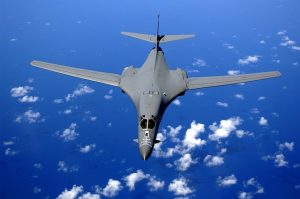
Do you know the difference between subsonic and supersonic flight? Like automobiles, airplanes have become faster over the years. The Wright Flyer, for instance, topped out at just 30 mph, whereas commercial airliners can reach speeds of 500 to 500 mph.
What Is Subsonic Flight?
Subsonic flight is the process of flying at speeds slower than the speed of sound. Depending on the altitude and temperature, sound typically travels at about 767 mph. This is known as “Mach 1.” Subsonic airplanes include commercial airliners, private jets and even military airplanes. Most subsonic airplanes fly at Mach 0.6 to Mach 0.9. Regardless, they all fly slower than the speed of sound.
What Is Supersonic Flight?
Supersonic flight is the process of flying at speeds faster than the speed of sound. Any airplane that’s capable of achieving speeds greater than Mach 1 is considered a supersonic airplane. Some supersonic airplanes fly at Mach 1. Others fly as fast as Mach 5. As long as an airplane can fly faster than Mach 1, it’s classified as a supersonic airplane, meaning it’s capable of achieving speeds faster than the speed of sound.
Differences Between Subsonic and Supersonic Flight?
Subsonic and supersonic flight involve different speeds. As previously mentioned, subsonic flight is always slower than the speed of sound, which is typically about 767 mph. Supersonic flight, on the other hand, is always faster than the speed of sound. Aside from their nuances in speed, though, there are other differences between subsonic and supersonic flight.
Subsonic and supersonic flights typically involve different types of engines. Supersonic airplanes are almost always powered by turbofans, ramjets or scramjets. In comparison, subsonic flights may be powered by one or more turboprops. Turboprops are jet engines that turn a propeller blade. They aren’t as powerful as turbofans, ramjets or scramjets, so they can’t achieve the same speeds.
Another key difference between subsonic and supersonic flight is that the latter creates a sonic boom, whereas the former does not. Upon breaking the sound barrier, the air compresses as it glides around a supersonic airplane. This process creates a show wave known as a “sonic boom.” If left unchecked, sonic booms can create turbulence and drag. Therefore, supersonic airplanes are typically designed with slim bodies and thin wings, such as delta-shaped wings.
In Conclusion
The terms “subsonic” and “supersonic” are used to describe how fast an airplane can fly. Subsonic airplanes fly slower than the speed of sound, whereas supersonic airplanes fly faster than the speed of sound.



